Internal view of the HP 35s
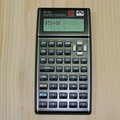 Please use the ▶mirror site as well.
Please use the ▶mirror site as well.
Internal view of the HP 35s

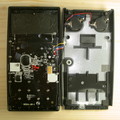
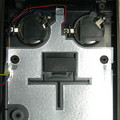
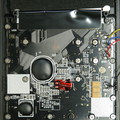
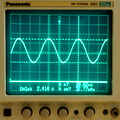
Crystal oscillator frequency (Ta=25°C)
fclock≈ 32.768kHz
Power supply current (fclock=32.768kHz, Ta=26°C)
VbatL(CR2032)=3.00V,
Irun≈4.5mA,
Iidle≈28μA,
ISB≈10μA
VbatR(CR2032)=3.01V,
Irun≈4.5mA,
Iidle≈28μA,
ISB≈10μA
Note: Nominal capacity of CR2032 ≈ 220mAh
Experimental crystal resonator replacement
I experimentally replaced the original 32.768kHz crystal resonator
at X1 with a 65.536kHz one, and found some curiosity.
Doubling the clock frequency would not affect the calculation speed at all.
Though the idle current are increased, the run-time current are almost identical
to that of the original (i.e. fclock=32.768kHz).
If the frequency of the crystal does not affect the calculation speed,
what is the use of the crystal?
What is clocking the MPU, I wonder?
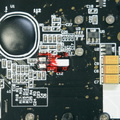
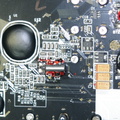
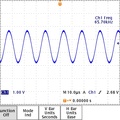
Power supply current (fclock=65.536kHz, Ta=24°C)
VbatL(CR2032)=3.02V,
Irun≈4.5mA,
Iidle≈39μA,
ISB≈11μA
VbatR(CR2032)=2.91V,
Irun≈4.5mA,
Iidle≈43μA,
ISB≈11μA
The answer was brought by the folks at the hpmuseum.
They say that the crystal oscillator is used for display refresh and keyboard scanning.
The crystal oscillator is seemingly being used as an interval timer clock source, as
the cursor blinking interval and the PSE time have been halved by this crystal replacement.
After a while I've got the datasheet of the Generalplus's GPLB31A microprocessor,
and confirmed that by reading its block diagram.
The processor clock frequency is programmed by R1 of the hp35s.
Changing its value from 62kΩ to 39kΩ, the processor will be overclocked by a factor of about 1.5.
This factor is very near to the maximum possible with new batteries,
for stable operation. (Using 47kΩ for R1 seems safe.)
SEE ALSO
HP 35s Trigonometiric functions(tan, cos and sin) alternative
APPENDIX - Program library
- Trig - HP 35s Trigonometiric functions (tan, cos and sin) alternative
- E24 - Find nearest fraction(s) in the E24 numbers
- Frac - Fractional approximation
- GCD/LCM - GCD and LCM of two positive integers
- μZw, μwZ - Synthesize/Analyze microstrip transmission line
EXTERNAL LINKS
MoHPC HP Forum Archive 17 "HP-35S disassembly photos?"
GeneralPlus GPLB31A data sheet [PDF]

![[Mail]](/~lyuka/images/mail.gif)



 © 2000 Takayuki HOSODA.
© 2000 Takayuki HOSODA.
Powered by












![[Mail]](/~lyuka/images/mail.gif)



 © 2000 Takayuki HOSODA.
© 2000 Takayuki HOSODA.